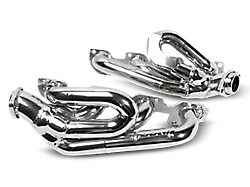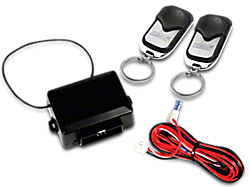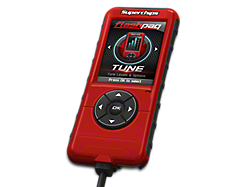Ram 1500 Engine Gasket and Seals Talk
Chrysler engines are above the standard when it comes to reliability, but they aren’t all steel and aluminum. Inside the belly of the beast you have gaskets between mating surfaces, and these will deteriorate over time. A gasket’s job is to create a perfect seal between surfaces. In the old days, you would likely find cork or paper gaskets between most surfaces and you would be spending more time replacing these types of gaskets than you would like to.
It’s true materials like copper, steel, aluminum, and maybe even silicon based gaskets will live between most surfaces of the modern engine. They will last longer than softer materials, but they too will eventually fail. This sounds like a pain, but keeping the gaskets properly maintained can prevent a lot of catastrophic levels of engine failure.
Today we are going to take a look at some of the major gaskets you will find in the engine of your Ram, what to look for when you’re suspicious of failure, and what it means to replace said gaskets.
Now, a measurement of the lifespan of the engines gaskets is very hard to gauge. Unless you drive your Ram exactly the same every day for the same amount of time, a lot of variables are going to come into play that will directly impact the lifespan of the gasket.
That being said, any engine with high mileage or that has been subjected to a considerable amount of abuse should be taken down for the gaskets and seals to be replaced in an effort to freshen up the engine.
Ram 1500 Cylinder Head Gasket
The cylinder heads are responsible for the engine’s major functions. They allow both the intake and exhaust to move through the valves and even house the spark plugs. Without them the engine simply wouldn’t run.
The head gasket’s job is to keep a seal between the cylinders and the head tight as well as coolant passages that run into the head. The cylinder head gasket also seals off water passages between the head and the engine block.
Many people dread the replacement of this gasket upon failure as it will require you to tear down the entire top end of the engine and can take several hours to be done. However, failure of this gasket can cause some pretty major issues that can destroy the engine if ignored.
You can detect a blown head gasket when you have loss of coolant, which may be visible upon inspection, traces of moisture in the oil, white smoke emitting from the cylinder head, or constant overheating.
Ignoring these symptoms can lead to major problems. Coolant that cross contaminates with engine oil can thin out the oil, and lead to destruction of the moving parts. It can also lead to the engine overheating and eventually warp the cylinder head. Last but not least coolant on valves and cylinder walls may lead to corrosion and can even lead to scoring and destruction of the machined surfaces.
Running an engine without proper lubrication and overheating are two of the worst things you can do to your engine for many reasons.
This is one of the most extensive and costly jobs when it comes to gasket replacement, but the silver lining is it will require you to replace other major gaskets such as the intake and exhaust gaskets. This way you can finish the job with peace of mind that they have been freshened up as well.
What are the Symptoms of a Blown Cylinder Head Gasket?
- Exterior leaks coolant
- Burning oil
- Presence of moisture in the engine’s oil
- Overheating
Ram 1500 Valve Stem Seals
Another major seal within the cylinder head are the valve stem seals. These seals are what keep oil that lubricates the valve from leaking down into the engine. Burning oil and blue smoke are a strong indication of the presence of a leaking valve stem.
They certainly can cause big problems but it would take time. If you’re already removing the cylinder head to replace the head gasket it is always a good idea to crack into the cylinder head itself and replace the valve stem seals.
If there are no signs of a bad valve stem seal you can get away with not replacing them on a fresh engine that blew the head gasket. If you do decide to approach this job, specialty tools will be required and it will add another hour or two to the cylinder head gasket repair.
What are the Symptoms of Blown Valve Stem Seals?
- Loss of oil
- Presence of smoke in the exhaust
- Burnt oil
Ram 1500 Intake Manifold Gasket
The intake manifold gasket’s important job is to seal off the gaps between the intake manifold to the cylinder heads. Loss of engine performance, vacuum leaks, and even losses of fuel economy are some of the symptoms of a bad intake manifold gasket.
Luckily for Ram owners, the replacement of this gasket is much simpler than the replacement of a blown cylinder head gasket. It can be done in a couple of short hours and you won’t have to spend the time tearing off the entire top end of the engine to get to the gasket itself.
What are the Symptoms of a Blown Intake Manifold Gasket?
- Loss of power/performance
- Loss of fuel economy
- Vacuum leaks
Ram 1500 Exhaust Manifold Gasket
The exhaust manifold gasket is likely the easiest to detect upon its failure. You will immediately hear a tone change in the exhaust note like you would with any other exhaust leak.
With some engines available to the Ram, such as the Magnum engines, this is a pretty common problem. If you aren’t sure if it is the manifold gasket based on sound, you can look for a decrease in power and performance as well.
The manifolds can be a bit of a job to gain access to as you will need to access the manifold through the wheel well, but it is still a fairly easy job and shouldn’t take more than 2-3 hours.
You can expect to have to replace hardware on both the factory heat shields and the exhaust manifold itself on older model Rams as they are subjected to excessive corrosion.
What are the Symptoms of a Blown Exhaust Manifold Gasket?
- Loss in power/performance
- Sound of an exhaust leak coming from the exhaust manifold
Ram 1500 Oil Pan Gasket
Your oil pan is the home of the engine’s oil supply. This bolts to the bottom half of the engine block and though it may not be subjected to as many pressures as other surface mating points within the engine, there is still a gasket that makes its home here.
If you perform regular oil changes, you should inspect the area for any signs of a blown oil pan gasket. You could easily identify this, as you would quickly spot oil leaking from the space between the oil pan and the block. An oil leak should always be addressed right away as proper lubrication is as important to an engine as blood is to your body, and lack of the proper amount can be extremely harmful to the internal workings.
Not to worry though. The hardest part about this repair in a Ram truck is having to lay on your back as you do the job, but it is otherwise simple and can be done in an hour’s time.
What are the Symptoms of a Blown Oil Pan Gasket?
- Leaking oil from the oil pan
Ram 1500 Crankshaft Seals
External oil leaks at the bottom of the engine near the oil pan may not indicate the presence of a busted oil pan gasket. Upon closer inspection you can find a leak at either the front or the rear of the crankshaft as a result of a blown crank seal at either the front or rear main seal.
At either side, the replacement of the seal proves to be a complicated and time consuming job that can require the use of specialty tools. With some Ram engines, like Magnum engines, you may even want to consider removing the engine entirely to gain access to the point of repair.
You might be tempted to let this leak slide as the job is difficult, but you should never do such a thing. These leaks can start small and only allow only a little bit of oil to escape, but eventually it will grow. As it does, more and more oil will leak and you can damage the engine extensively as a result.
What are the Symptoms of a Blown Crankshaft Seal?
- Excessive loss of oil
- Oil leak at the front or rear of the engine’s crankshaft
Ram 1500: Other Gaskets
There are far more gaskets and seals within the engine that should be replaced than what is listed here. Between every surface you will find gaskets and/or seals. They may not be as major as the ones listed, but make no mistake that without them the engine’s functions would be greatly hindered.
Water pump gaskets can bust and cause overheating issues and loss of coolant. Timing cover gaskets can bust and cause a loss of oil, and the list just keeps going.
A good rule of thumb to follow is any time you find gasket failure you should dive into the engine bay and look around for any signs of leakage.
The earlier you spot and replace a failed gasket, the better. Doing so will only prolong the lifespan of the engine and keep you enjoying your Ram 1500 truck for a long, long time.
Shop All Truck Accessories & Parts
Fitment Includes:
- 1994, 1995, 1996, 1997, 1998, 1999, 2000, 2001, 2002, 2003, 2004, 2005, 2006, 2007, 2008, 2009, 2010, 2011, 2012, 2013, 2014, 2015, 2016, 2017, 2018, 2019, 2020, 2021, 2022, 2023 and 2024 Dodge Ram 1500s
- Base, LT, ST, SLT/Sport/TRX, Laramie, R/T, Sport, SS/T 5.9L, WS, Laramie Longhorn, Tradesman Heavy Duty, Tradesman/Express, Tradesman, HFE, Rebel, Longhorn, SRT/10, 1500 SLT Plus, Daytona, Mega Cab Dodge Rams
- Engines: 3.0L EcoDiesel V6, 3.6L Pentastar V6, 3.7L V6, 3.9L V6, 4.7L V8, 5.7L Hemi V8, 3.7L Magnum V6, 4.7L Magnum V8, 5.2L V8, 5.9L Magnum V8 Ram Trucks
*Please see product pages for any exceptions





